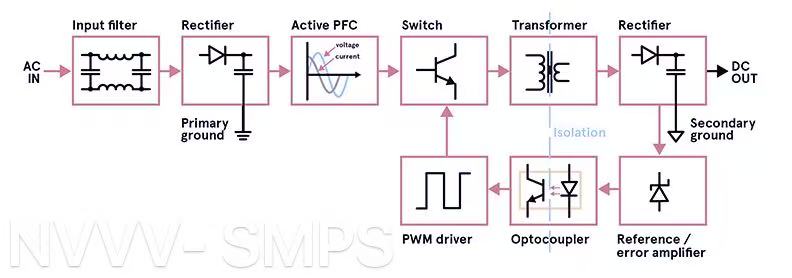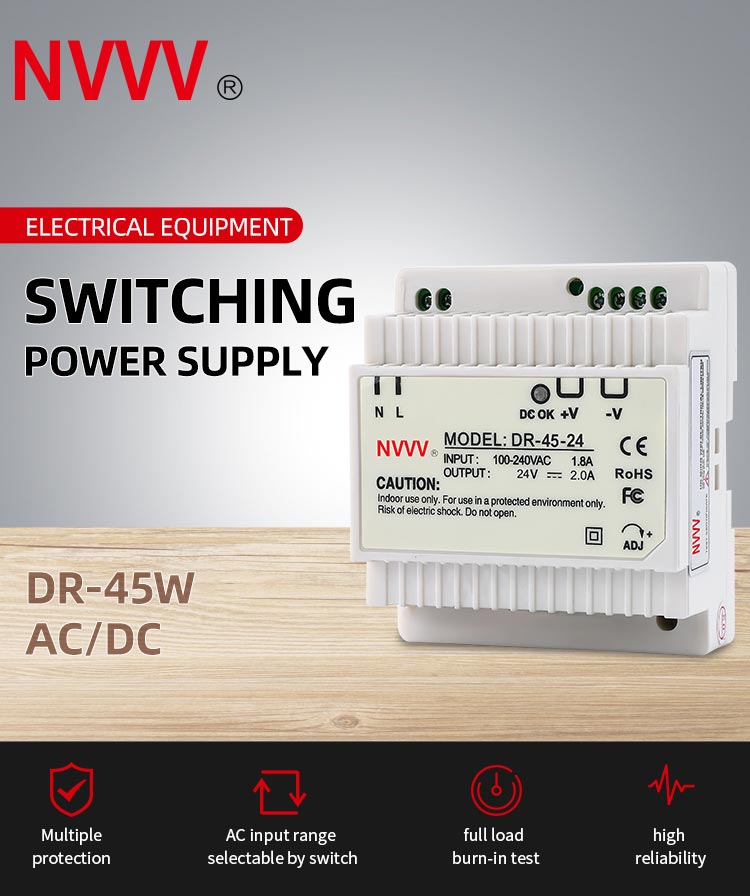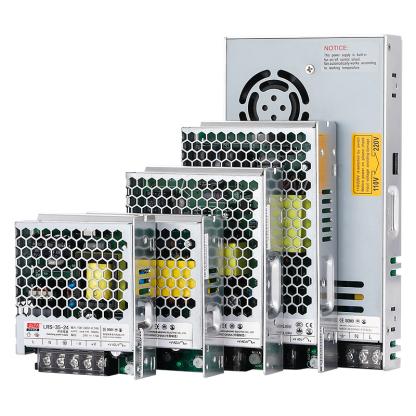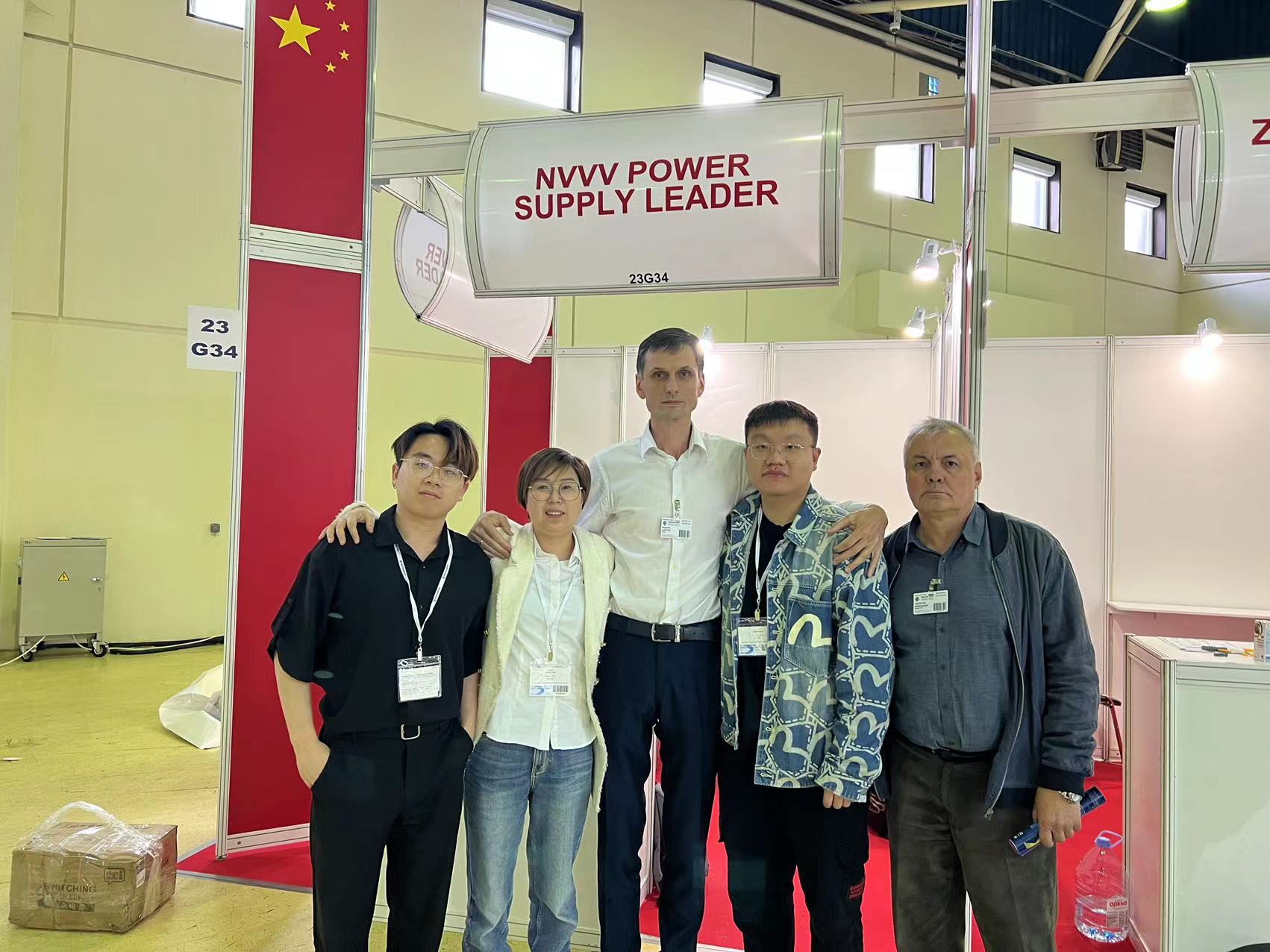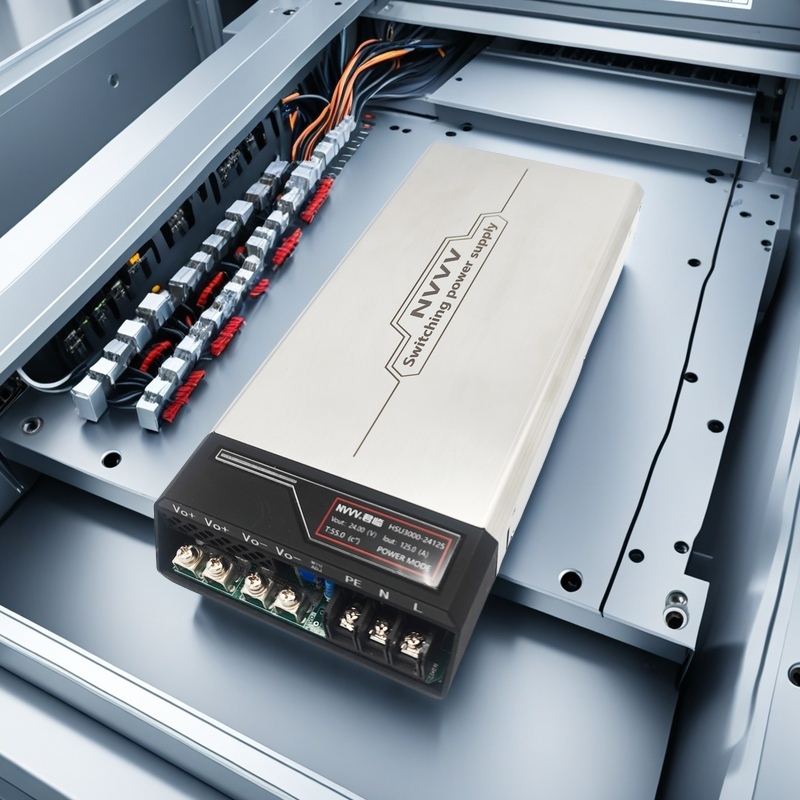Why Switching Mode Power Supply (SMPS) Is the Smarter Choice for Modern Electrical Systems
In today’s industrial and commercial landscapes, power conversion is more than just a technical necessity—it's a performance driver. From precision-controlled production lines to compact automation cabinets and intelligent lighting systems, the switching mode power supply (SMPS) has become an essential building block of modern electrical infrastructure. The demand for energy-efficient, reliable, and compact power conversion solutions has never been higher.
Across sectors, engineers and designers are replacing bulky, heat-prone linear power supplies with high-efficiency SMPS units to meet increasingly stringent energy standards and space limitations. But the value of SMPS goes beyond just efficiency—it brings long-term benefits in system design, safety, maintenance, and total cost of ownership.
Table of Contents
What Makes Switching Mode Power Supplies So Efficient?
How SMPS Enhances System Reliability and Longevity
Is SMPS the Right Fit for Your Application?
The Future of SMPS: Trends and Innovations to Watch
Conclusion: Why SMPS Is a Long-Term Asset
What Makes Switching Mode Power Supplies So Efficient?
The efficiency of SMPS lies in how it handles voltage regulation. Unlike linear power supplies, which lower voltage by dissipating excess energy as heat, SMPS rapidly switches the input power on and off using transistors operating at high frequencies—usually tens or hundreds of kilohertz. The resulting pulses are then filtered and smoothed into a stable output.
This switching method results in far less energy wasted as heat, which is a critical advantage in systems where thermal load needs to be minimized. For instance, in a 24V industrial control panel with dozens of relays, sensors, and microcontrollers, switching to SMPS instead of traditional linear regulators can reduce the panel’s ambient temperature by several degrees, minimizing the risk of heat-related component degradation over time.
In applications such as vending machines or access control systems, which run continuously in public spaces, this efficiency translates into tangible cost savings on energy bills. Additionally, the smaller size and weight of SMPS—thanks to their compact transformers and high-frequency design—simplify enclosure design, reduce shipping costs, and make installation more flexible, especially when mounted on DIN rails or within space-constrained environments.
Another example is in outdoor LED lighting systems used for signage or architectural installations. These systems require constant voltage or current with minimal fluctuations. SMPS units excel here by delivering tightly regulated output even when input conditions vary. In coastal or desert areas with unstable grid power, this ability to maintain clean, consistent power becomes a key factor in system reliability.
How SMPS Enhances System Reliability and Longevity
In industrial and automation environments, reliability isn’t optional—it’s the foundation of operational continuity. Equipment that fails unpredictably not only interrupts production but also introduces safety risks and maintenance burdens. SMPS units are built with this in mind.
Their circuitry often includes multi-layer protection mechanisms, such as short-circuit, over-temperature, and over-voltage safeguards. These mechanisms work in real time, responding within milliseconds to anomalies. For example, when a surge occurs in an assembly line's motor control cabinet, the SMPS supplying low-voltage control power will instantly limit output current or shut down gracefully, protecting downstream components.
Moreover, due to their lower internal operating temperature and better thermal efficiency, SMPS components—capacitors, switching transistors, and inductors—experience less stress over time. This contributes to longer operational lifespans, often exceeding 50,000 hours under proper conditions.
In a real-world setting, consider an automated bottling plant operating on a three-shift schedule. Downtime is extremely costly, and every part of the control system must remain stable around the clock. An SMPS with mean time between failures (MTBF) exceeding 100,000 hours provides the level of predictability and reliability such environments demand. Operators report that once installed, SMPS units often run for years with minimal to no intervention, apart from routine checks.
Similarly, in CNC machines, the quality of the power supply can directly influence motion control accuracy. An unstable power source may cause stepper motor jitter or interrupt signal integrity. A high-grade SMPS eliminates such issues by ensuring constant voltage under load, effectively contributing to machining precision.
Is SMPS the Right Fit for Your Application?
The growing variety of SMPS formats—ranging from wall-mounted adapters and open-frame modules to DIN rail-mounted industrial units—means that there’s almost always a model suited for a specific environment. However, choosing the right unit requires matching features to use-case requirements.
Let’s say you’re designing a control cabinet for an HVAC system in a commercial building. The system needs 24VDC for actuators, thermostats, and PLCs. You need an SMPS that not only provides stable output but also supports wide input voltage, say from 85VAC to 264VAC, to tolerate any grid fluctuation. An enclosed type SMPS with UL/cUL certifications ensures safety compliance, while a model with built-in active PFC (power factor correction) minimizes reactive power draw and prevents power supply from negatively impacting the facility’s electrical efficiency.
Another scenario: in warehouse logistics, Automated Guided Vehicles (AGVs) are increasingly common. These battery-powered robots rely on onboard electronics to handle navigation, sensors, and motor control. A compact, vibration-resistant SMPS ensures stable power conversion from the vehicle’s main battery system, reducing the chance of electronics resetting mid-task. Some suppliers even offer shock-tested versions of SMPS tailored for mobile or moving applications.
In telecom infrastructure or network switch enclosures, space is always at a premium, and cooling is difficult. A high-efficiency SMPS with high power density solves this problem, minimizing heat while maximizing uptime. Models with extended temperature tolerance (-20°C to +70°C) are also available for outdoor use.
In these diverse cases, the right SMPS doesn’t just power your system—it aligns with your operational goals, environmental conditions, and lifecycle expectations.
The Future of SMPS: Trends and Innovations to Watch
Switching power supplies have seen consistent development over the past two decades, and the pace is accelerating. With the growing focus on sustainable design, connectivity, and miniaturization, several key trends are shaping the next generation of SMPS products.
First, digital control ICs are becoming standard in high-end SMPS. These chips allow for programmable output voltages, temperature-based fan control, and even remote firmware updates. A system integrator designing a factory-wide SCADA system might choose such SMPS units with Modbus communication to monitor power conditions across all panels in real-time—enabling predictive maintenance and load balancing.
Secondly, the use of advanced materials like Gallium Nitride (GaN) and Silicon Carbide (SiC) semiconductors is pushing efficiency boundaries. These components switch faster and handle higher voltages with less loss, making them ideal for high-power industrial applications like motor drives and welding systems.
In off-grid and renewable energy systems, solar inverters and battery chargers increasingly use SMPS due to their ability to adapt to varying input conditions and deliver intelligent charge control. For instance, in a remote weather monitoring station powered by solar panels and batteries, SMPS ensures that all instruments—from sensors to data loggers—receive clean, regulated power regardless of fluctuations in sunlight.
As Internet of Things (IoT) technologies expand, SMPS is also being integrated into smart ecosystems. Power supplies embedded with sensors can now report load data, operating temperature, and fault events directly to cloud platforms. This turns them from passive components into active contributors to system intelligence.
Conclusion: Why SMPS Is a Long-Term Asset
Choosing the right switch mode power supply is no longer a behind-the-scenes decision. It affects everything from product lifespan and maintenance intervals to energy consumption and user satisfaction. In this context, SMPS offers an unmatched combination of efficiency, safety, compactness, and scalability.
Whether used in large industrial machinery, compact control panels, or emerging IoT solutions, SMPS helps engineers and integrators meet the evolving needs of modern electrical systems without compromising on reliability or performance.
The next time you’re planning a system upgrade, consider not just the power output, but also the added value—less heat, longer lifespan, built-in protection, global voltage support—that a well-chosen SMPS can bring to the table.
About NVVV
NVVV is a professional manufacturer of high-performance Switched Mode Power Supplies (SMPS), serving global customers across industrial automation, LED systems, CNC machinery, and smart control solutions. With a focus on quality, durability, and affordability, NVVV products are engineered to perform in real-world industrial conditions and meet international safety and efficiency standards.
To learn more about NVVV’s complete range of SMPS products, visit the official website or contact the team for technical support and recommendations tailored to your application.

